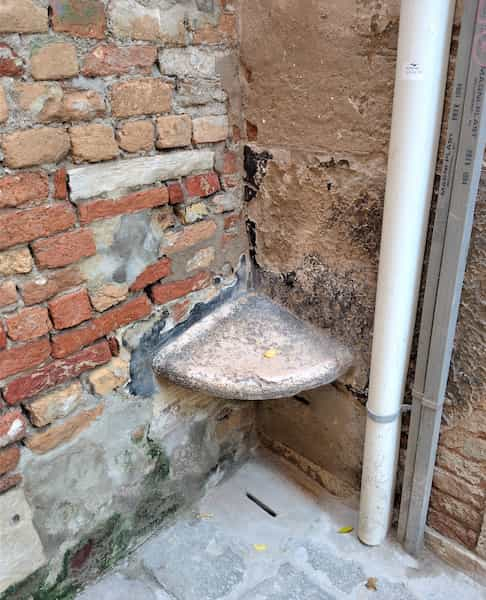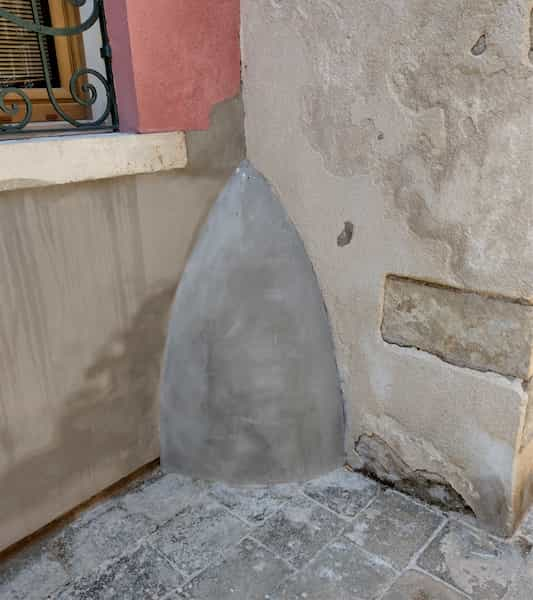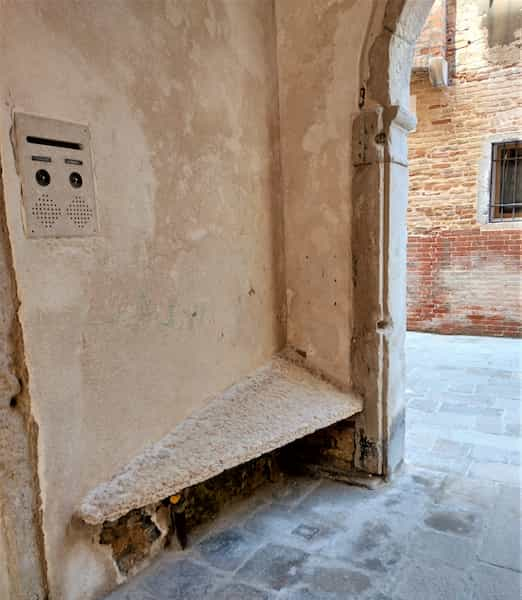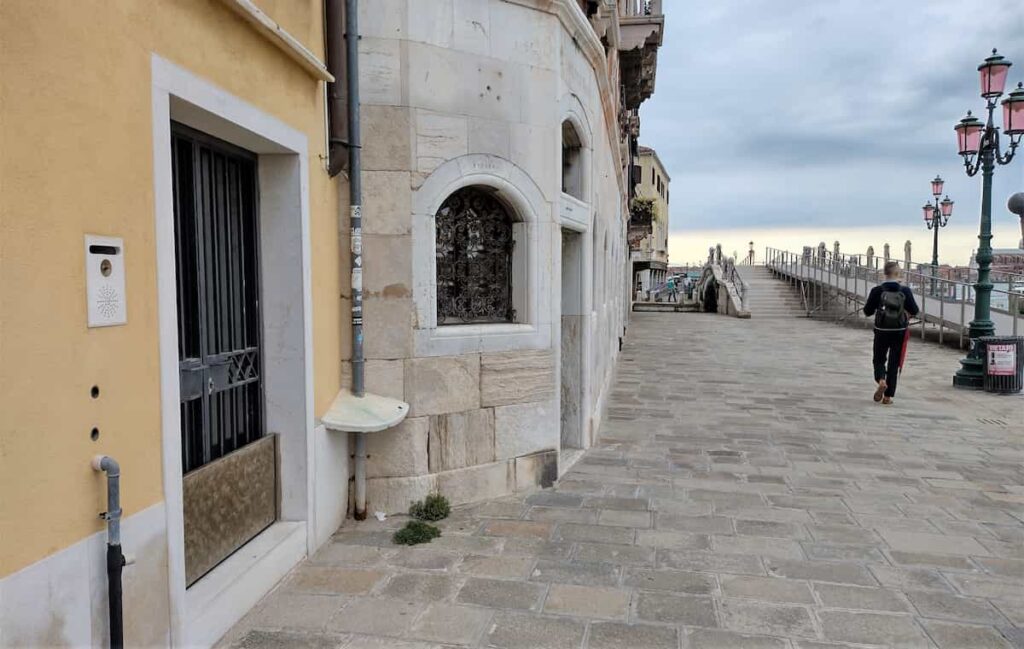The streets of Venice are strange and mysterious. The city is floating on water, it has no cars, just boats. The Canals and Rii are her streets, and what’s left on land, is more or less just very narrow paths between the withering house walls.
Once upon a time, most of the Venetians moved around on the water, in Gondola or in something else that was floating in the middle of the bigger waterways. The dark backstreets were mostly for service purposes, and of course all the different kinds of trade that are better done in the shadows.
So, if the streets in Venice were the canals, what were the land-streets called?
The land-streets in Venice are called Calli, or Calle in singular. The word means path and it’s divided into Calletta or Callesella if it’s a small path. A big, important path is called Salizada, and if it has a lot of shops and other business institutions, it’s called a Ruga. A small, blind alley is called Ramo. Only Strada Nova and Via Garivìbaldi are named with the normal label for street and way.

Le Pissotte – The mysterious triangle in the corners of the streets of Venice.
So, if you have ventured into the incredible labyrinth of the Calli, Callette, and Rami of the Venice Street landscape, you surely have noticed the strange, triangular shapes in the corners. Peculiar forms, like a quarter of an upside-down teacup. They can be in Istrian stone or some other precious material, but mostly they’re in concrete or even iron.
They are small, like a chair. But if you would try to sit on one, you would inevitably fall off. No, they are not for sitting. They are actually for nothing like sitting, standing, or even getting close… They are there to keep you away.
There were two distinctive reasons for them…
So, imagine a city in the 15th century… Any city. There was no electricity. The only light that could ever be obtained was from oil-lamps, candles, fires, and stoves, and such. And those weak lights were all inside the domestic sphere. In some cities they may have had some sort of illumination even in the main square, but more than that, it was mostly dark.
In Venice, there were no street lights, and the Calli were dark… Dark as darkness in the middle of a forest at night. And the outdoors in Venice were nothing like you see it today. People had animals, they grew crops in their backyards, even horses were common. The Venetians actually used to ride in the streets of Venice, just like anywhere else at the time.

In 1287 a law dictated that no riding on horseback was allowed in the area between Saint Mark’s and Rialto. Only newly arrived in the city were excluded. But apart from that limitation, riding in the Venice streets continued for hundreds of years.
The streets in Venice used to hide many dangers.
The darkness concealed many other hazards, apart from the horses. Robbers, bandits, and molesters were everywhere. And what better spot to hide while waiting for their victims, or simply to get away from any law enforcement… than the darkest part of the streets of Venice, the corners.
And the corners were everywhere. It doesn’t need to be more than a small difference in thickness of the wall to create a recess of a foot or two. That’s enough to hide a criminal waiting for its victim.
This brings us to the common name of these things. Gobbe Antibandito, they are called, meaning Anti-bandit-hump. Made to block the corner and force anyone who tries to evade the glances of the passersby out in the open.
And lastly… The name Pissotte?

There is another name associated with these stone triangles, namely Pissotte or Pissabraghe. Well, the first part of the word, piss is not difficult to understand for an English-speaking audience. Braghe is the Venetian word for pants. And there you might guess what the second reason for putting up these strange moldings is. You should also be able to speculate why the inclination of the Pissotta is the way it is…
And stopping people from urinating in the corners is a valid motivation even today. If you look around, you can even find a few that are not very old at all. They are set up even in our times, and they are still serving the citizens and visitors of Venice helping with keeping the city clean.
Nowadays, not many bandits roam the streets of Venice at night. But men who desperately need to take a wee, are getting increasingly frequent…
